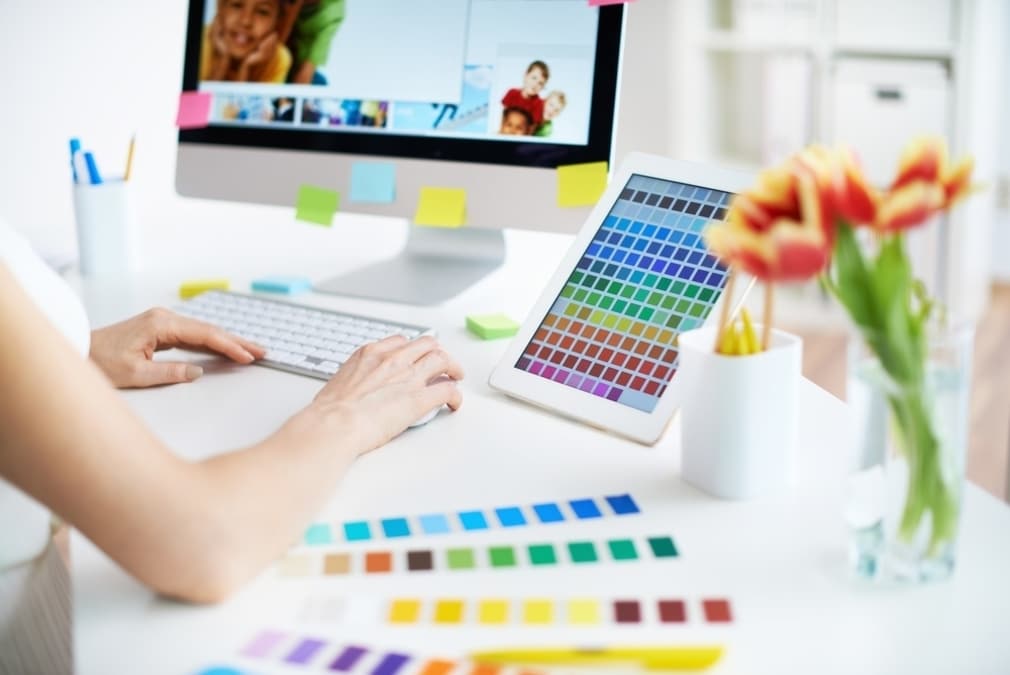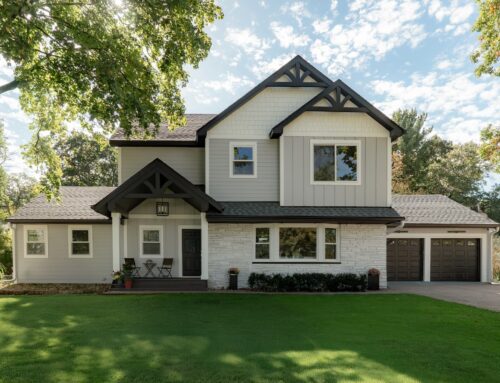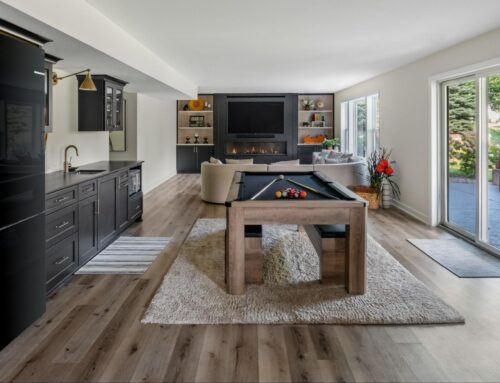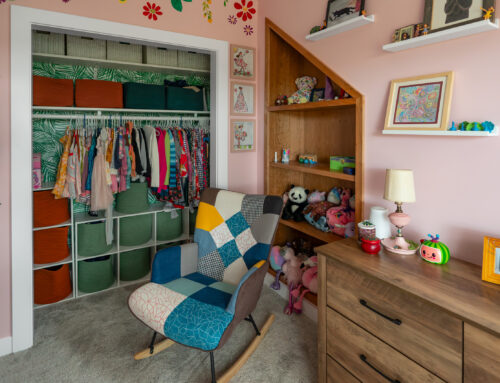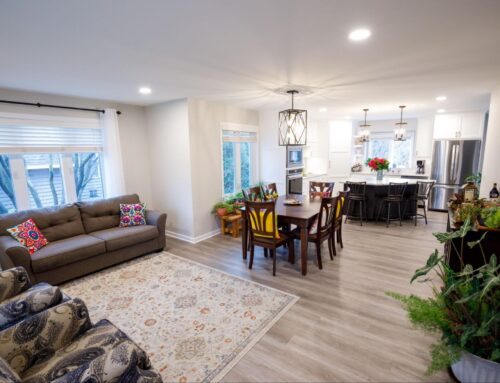Ever wondered, “How does an interior designer make their decisions?”
At Titus Contracting, we get a daily front-row seat to the creativity and expert problem solving of our lead interior designer, Stephanie Morris. But, sometimes we wonder how she always chooses the right design elements for each client.
Today, Stephanie is sharing why so many of our Twin Cities home renovation clients see their design plans and say, “Wow! You really listened to what I wanted. It’s better than I could have imagined!”
Keep reading to learn the three magic words that guide Stephanie’s designs, and learn how you can think like a designer, too.
You’ve likely heard the phrase “form and function”. It’s applied to nearly everything we design and create for human use — interiors, websites, cars, table lamps. Even your favorite pen. We see a balance (or imbalance) of form and function everywhere.
Ever bought a sweater you absolutely loved, but it was immediately misshapen and pilled after a wash or two? That’s an example of great form, but terrible function. It looks pretty from the outside, but, when tried and tested in real life, doesn’t hold up.
Or maybe you found a home listing that checked all of your boxes — ideal number of beds and baths, great location, ample garage and mudroom space — only to walk through it and hate literally every color, finish, and fixture inside? Decent function, poor form.
These two words are pillars that good interior design must rest on. If you want to think like a designer, you have to consider both the form and the function.
What roles do form and function play in a home renovation?
- Function is anything you can see in a blueprint. The functional elements determine how the space is used. The floorplan, doors and windows, outlet placements, cabinet layout and organizational features. Things you can measure and see in a blueprint.
- If function makes the blueprint, form makes the mood board. Form is the layer on top of all of the bones of the space. The details you notice in a rendering. The finishes and fixtures, decorative elements, colors, and materials used to make it visually pleasing.
We know intuitively that these two things need to be in some sort of tandem. A delicate balance to make things work at an optimal level. This is a key part of a designer’s job, and they affect every decision your interior designer makes.
Which is more important in interior design: ‘form’ or ‘function’?
We typically hear the phrase “form and function”. In that order. So one would assume form comes first. And many people (mistakenly) assume interior design is picking pretty finishes that ‘go together.’ (Homeowners themselves tend to lead with form, focusing on Pinterest boards as they dream up their ideal home remodel.)
But Steph says the function needs to come first. “No matter how beautiful a space is to look at, if it doesn’t function well for your life and your needs, it’s not good design.”
While function should trump form in the end, it’s important to note that form and function are not two separate-but-equal parts of a whole. Or some sort of secret recipe. It’s not: a dash of form, a little bit of function, and you’re good to go!
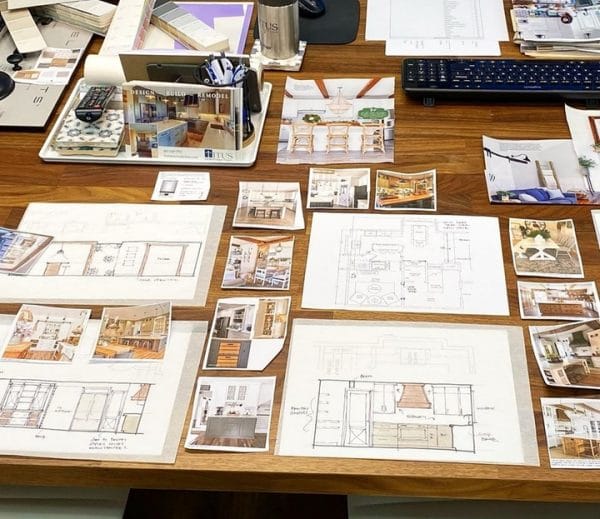
Instead, form and function act like two ends of a balance scale: If you shift one, the other shifts, too.
Every decision your designer makes regarding the function of a space has direct implications for her decisions about form, and vice versa.
For example, if you’re creating custom built-ins for a basement remodel, your designer will first design the shape, size, and features of the cabinetry (aka, the ‘function’). From there, she’ll be able to select the right trim details, the cabinet color, and the hardware style that brings the whole space together.
But, if you decide you’d rather expand these cabinets from a credenza-style to a ceiling-height built-in with a TV cabinet, it affects more than the dimensions. Suddenly the trim details might be too busy for a cabinet of that scale. That much dark woodwork might not feel balanced in the room. Or the hardware no longer feels quite right. So adjustments to the design details (the ‘form’) have to be made, too.
Which brings us to the third magic word you need to consider to think like a designer…
The final guide for an interior designer’s decisions: Feeling
Steph insists that the most important factor in her design decisions is ‘feeling’. But what does this mean? When form and function are expertly balanced, you can feel it. Steph says to achieve this, interior design needs to be personal. Not just as in family photos on the wall, but tailored in both form and function to your daily habits, routines, and rituals.
“When our team meets with a client, we’re focused on listening above everything else. We’re not trying to tell you what good design is — that’s subjective. Good design is what works for you and the way you live.”
In fact, Steph trains junior designers to listen to what clients say, but just as importantly, to pay attention to what they don’t say. “I tell them ‘Study your clients’ lives. Look at how they live. Do they have kids? Pets? Where are the clutter spots? How do they actually use their spaces?’” Steph explains.
This attention to detail often leads Steph to create a third design option when presenting plans to clients. She’ll always provide 2 per their explicit requests and feedback. But the third? That’s based on her observations about their lives during initial home visits. “And you know what?” Steph says, “They almost always pick the third one.”
“We’re often not our own best advocates,” she continues. “That’s my job as a designer. To advocate for my clients and make sure the end result is what they want visually, but also what they need to live their best lives.”
So if you want to think like an interior designer, don’t just pay attention to form and function.
Go beyond the layout and finishes of a room you saved on Instagram. Ask yourself what you need from a space to make it ideal for the way you actually live. Consider form, function, and feeling. Then you’ll be thinking like a designer.

